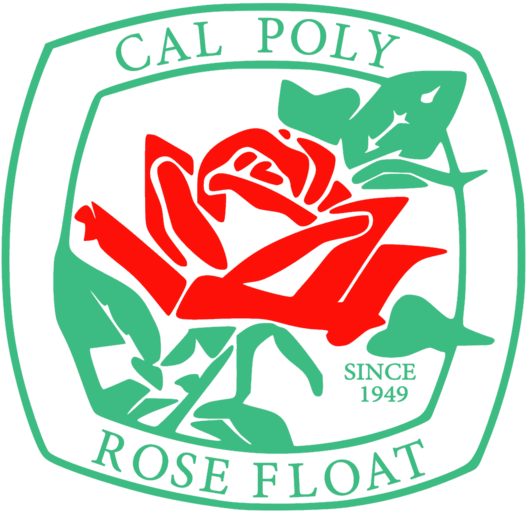Our Beginning: Learn By Doing
Ornamental Horticulture student Don Miller deserved credit for getting Cal Poly into the annual Pasadena Tournament of Roses Parade. His family, long-time residents of the Pasadena area had a history of involvement with the parade. As a proud Cal Poly student, Don Miller had openly spoken in the presence of Tournament officials about his belief that Cal Poly could create a Rose Parade float. At the end of the summer in 1948, Don Miller got a surprise call from the Pasadena Rose Parade Committee asking if Cal Poly really could produce a float entry within 100 days. Although there was no precedent, no budget, no design, nor a committee for the project, Don said, “Sure!”
With less than 100 days to the parade, Don Miller committed the two Cal Poly’s into coming up with an appropriate float design; initiating an all-out effort to raise the needed funds; securing the required plant materials for decoration; and pulling together enough gullible Cal Poly students, not to mention faculty and staff, that were willing to take on the challenge of their lives. A $258 budget was somehow acquired and float production was underway.
As the Parade deadline drew closer, desperately needing float foliage, Mr. Batcheller decided that certain campus plants were over-due for “heavy pruning.” There were also some midnight flower raids on campus and whole neighborhoods devoid of flowers. In addition, lumber was appropriated from the school construction projects at odd times of the day.
Cal Poly’s first float for the January 1, 1949 parade, “Rocking Horse”- kids on a large rocking horse, ultimately made it to the Rose Parade on time and won the Award of Merit.
The first decade of float building at Cal Poly was handled entirely by the students at the Pomona (former Voorhis) campus through the mid-sixties. However, the San Luis Obispo campus did support the project with money as well as a group of student decorators that showed up on the final days in Pasadena.
The 1957 and ’59 floats captured the Theme prize. In the fall of 1961, women were first admitted to the Pomona campus and participation in the Rose Float project seemed to explode.
Prior to the official division of the two Cal Poly campuses in 1966, it had always been the responsibility of the Pomona Rose Float Chair to request and justify money from San Luis Obispo campus. A decision was made by the Pomona Chair in the spring of 1963 to recruit a “float representative” on the San Luis Obispo campus to help in the fundraising process on the San Luis Obispo campus.
The 1966 float, “It’s a Child’s World,” captured the Judges Special award and signaled the start of a long run of banner winners in the years to follow.
With the division of the two Cal Poly campuses in the summer of 1966, the students mutually agreed to continue the tradition of a float building project as a ‘joint’ entry between Pomona and San Luis Obispo.
A Cal Poly ‘first’ was the introduction of hydraulics for animation in the 1968 float, “The Mouse that Got Away.” This creative and technically outstanding float captured the Princess Trophy. The 1968 float also introduced another benchmark in the Cal Poly float program when the students at San Luis Obispo began to produce a portion of the float on their campus. Today, the two campuses share in the construction as well as all other functions of the Rose Float program.
The Rose Float Club was initiated on the Pomona campus in the spring of 1968 as a support group to the Rose Float project. It was initiated primarily to retain the earnings of the sales of product and excess flowers grown on the Pomona campus. Prior to this time, all year-end excess funds reverted back to the ASI general funds. Today, the Rose Float Club serves as a support function of the committee, promoting the program to bring in volunteers and donors, providing meals to the team and fundraising money.
A Rose Float Lab at San Luis Obispo was eventually created. And the renovation of the Pomona lab included an expanded concrete slab with a covered overhead. The Pomona lab was dedicated to the memory of Hal Roach, a student member of the first Rose Float Committee and the driver of the entry in 1949. Later Hal Roach returned to the campus in the late ‘60s to assume the General Manager’s position for the new student union. As an additional duty he also became the senior advisor to Rose Float.
Over the years, the Cal Poly Rose Float program has become an institutional icon of the “learn by doing” polytechnic model. Students are continually pushing the float building boundaries
with innovative ideas and succeeding, just like Don Miller did back in 1949. The two Cal Poly Universities, Pomona and San Luis Obispo, will continue to work together to build award winning floats for decades to come.
SUPPORT
Cal Poly Rose Float’s success is attributed primarily to students' hard work and the support from community members. Today, we encourage you to learn more about how you can give to this wonderful program.

